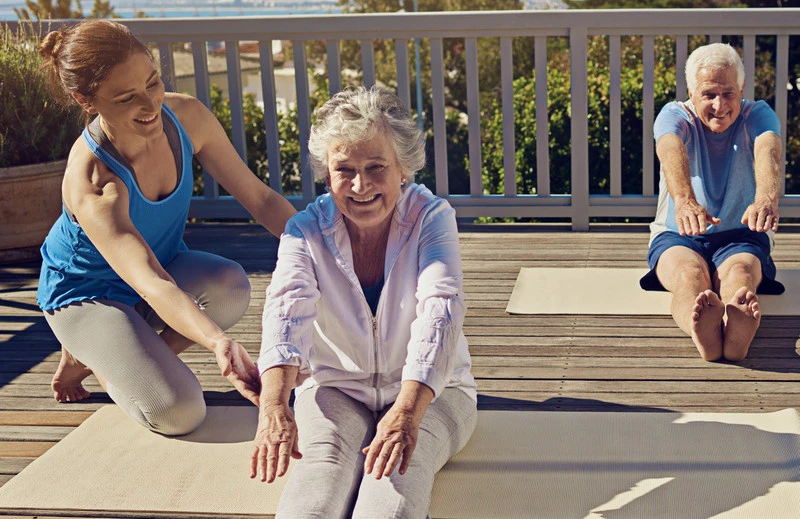The United Nations estimates there will be 16% more seniors over the age of 65 globally by 2050....
The United Nations estimates there will be 16% more seniors over the age of 65 globally by 2050. The CB Insights News Mention Tool shows a significant increase in news reports on the subject. Thus Wearable technology may be helpful for older persons for various purposes, such as tracking clinically essential health data, spotting falls or keeping track of their physical activity.
Wearable Health and Wellness Technology
Wearable technology in healthcare refers to consumer-friendly electronic devices. These devices measure users' activity and health data. Some can instantly transmit a user's health data to a physician or other healthcare expert.
Wearable technology appears to be one of the most preferred devices in healthcare. However, other equipment is undoubtedly helpful in keeping seniors safely in their homes for as long as feasible. Wearable gadgets, such as smartwatches and pendants, are practical, simple, and efficient.
Usage By Clients And By Caregivers
To keep an eye on your vital signs to provide you with more attentive care
Throughout the epidemic, managing chronic conditions has necessitated a lot of flexibility from seniors. It is an area where wellness technology devices have excelled. These devices allow for user's to access their biometric data.
Also, according to studies the likelihood of a significant injury increases the longer a senior stays on the ground following a fall. A resident may rapidly tell staff they need assistance using a medical alert wearable by pressing a button or issuing a vocal command.
Utilize biometric information to customize fitness classes
Even the healthiest persons are unaware of their specific physical limitations. A wearable eliminates uncertainty in assessing the effectiveness of exercise and provides fitness instructors with accurate biometric data they may use to direct lessons.

For instance, the teacher can offer directions to scale back the activity for three class members if the goal heart rate for a particular exercise is 115 and their heart rates have climbed to 130. Alternatively, if a few participants' heart rates don't increase sufficiently, the trainer could feel at ease gradually raising the workout's intensity for those individuals.
In either scenario, a wearable aids community fitness instructors in better tailoring their sessions to the specific requirements of the students.
Organize fitness challenges using activity sharing features
Many elderly folks have become more inactive due to lockdowns caused by the pandemic. And a recent study shows that this lack of exercise has persisted.
Activity leaders can design community-wide competitions where, for example, the resident having the most steps per week wins. This helps to promote exercise and discourage sedentary lives.
Utilizing a wearable encouraged 45 percent of seniors to live better lives, according to 2015 research. According to the study, add a reward—which may boost intrinsic motivation—and you might see better outcomes from your residents more quickly.
Wellness Wearables Improve The Quality of Senior Care
This technology offers a number of solutions:
Improving Caregiving Effectiveness
Professional caregivers frequently use caregiver apps to keep track of clients' individual information and to record everything from help to nutrition to meds on a single, centralized app. Before an emergency scenario develops, this procedure can assist agency managers in identifying patterns or possible risks.
Apps or other gadgets can assist family caregivers in staying in touch with their loved ones and gaining additional knowledge about what is occurring when they are at home. For instance, if a father in New York doesn't engage with the automatic pill dispenser in his house, a missed medicine notice is sent to a daughter in California.
Increasing Accessibility
Telehealth technologies provide elderly patients the option to speak with their doctor by phone or video chat while still living at home. Before 2020, only a small number of seniors had used telehealth services, but the COVID-19 pandemic provided the ideal setting for more of them to try it.

Traveling to and from medical visits becomes increasingly challenging for seniors. It is not always simple to get in the car and drive to a medical check-up or follow-up appointment, whether it’s because of mobility limitations, a weakened immune system, transportation issues, or other difficulties.
Technology can fill the gap and increase everyone's access to medical care and follow-up.
Promoting Healthy Aging At Home
Seniors who remain at home are more prone to loneliness, which can harm their physical and emotional health. Additionally, seniors who live alone cannot always participate in community-based programs for healthy aging.
Adults may use technology to stay connected to the services, resources, and support available to them in their local community. Additionally, it can give doctors more details about the seniors' everyday activities, so they can take preventative measures rather than anticipating a medical emergency.
Revolutionizing Valuable Data Collection
Data collection has evolved dramatically. For example, health smartwatches which formerly served as timepieces and step counters, are now clinically useful healthcare instruments. To track users' heart rhythms and notify individuals who are experiencing atrial fibrillation, Apple released the Apple Heart Study app in 2017.
Personalizing Senior Physical Activities
Today, medical alert pendants and wristbands have fall-detection technology that may identify possible falls. When this happens, the wearer is prompted to indicate if they require immediate assistance. The gadget may notify emergency services of the wearer's location without a follow-up response owing to GPS technology.
Drug Dispensers: The typical pillbox is becoming outdated because of automated medication dispensers. These devices can distribute medicine and notify seniors when it is time to take it. Then, if the user doesn't take their prescription, a text alert is sent to a family member who can take action if necessary.
Connections with Caregiver: The combination of wearable and home technologies makes it simple for family caregivers to communicate.
Conclusion
It's critical to have plans to maximize the value of wearables, regardless of whether your community chooses to buy wearables for residents or offers to connect residents' own wearable devices with current systems (EHR, eMAR, chronic care management platforms, etc.).
When used appropriately, wearable technology increases resident autonomy while enhancing the quality of care. With wearables, senior citizens may autonomously monitor their vital signs or keep track of their physical activity without depending on personnel.
CareMate is a wellness platform that provides family members with the information they require via smartphone technology without interfering with or compromising the care or well-being of the loved one.
CareMate is applied to the center of the body by loved ones or clients like a patch. The wireless gadget is inconspicuous, discrete, and comfortable. CareMate serves as an early warning system for potential wellness concerns in elderly citizens by keeping track of crucial vitals and essential activities. The system notifies professionals or family members if something is wrong so that the client may receive immediate treatment.